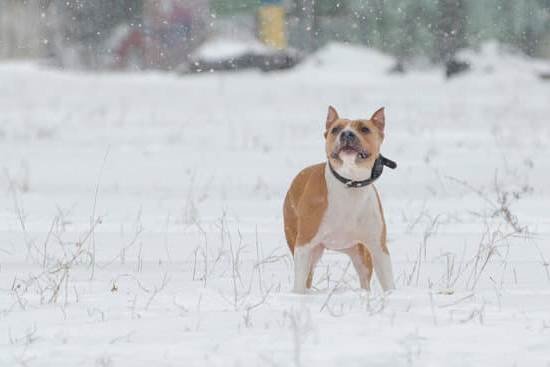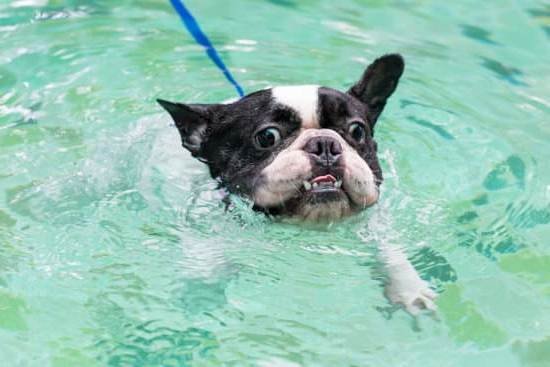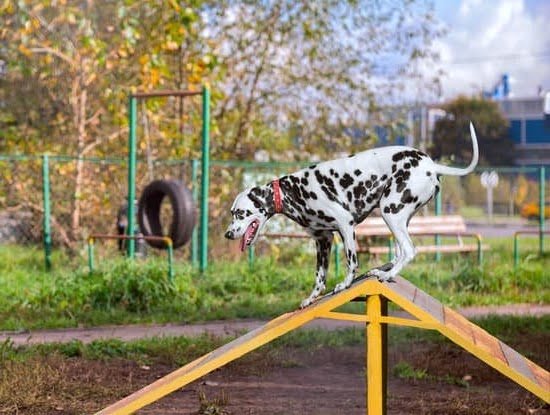Are you interested in learning how to train your dog for international service dog certification? Service dogs play a crucial role in the lives of individuals with disabilities, providing assistance and support in their daily activities. In this article, we will explore the process of training a dog for international service dog certification, from understanding the certification process to preparing for the certification test.
Choosing the right dog for service dog training is the first step in the certification process. Not all dogs are suitable for service work, so it’s important to select a breed and individual with the right temperament, intelligence, and physical ability. Once you have chosen a candidate, the next step is basic obedience training to ensure that your dog has a solid foundation of manners and obedience skills.
After mastering basic obedience commands, advanced training techniques are necessary to prepare your dog for the specific tasks required for international service dog certification. This may include specialized training for mobility assistance, medical alert, psychiatric support, or other specific needs. Moreover, socialization and public access training are essential to ensure that your service dog is well-behaved and comfortable in various environments and around people.
In addition to practical training, it’s important to understand the legal and ethical considerations of international service dog certification. Knowing your rights and responsibilities as a service dog handler will help you navigate public spaces and travel with confidence. Finally, we will discuss how to prepare for the international service dog certification test, including what to expect and how to ensure that your dog is ready for evaluation.
Choosing the Right Dog for Service Dog Training
When it comes to training a dog for international service dog certification, choosing the right dog is crucial. Not all dogs are suitable for service dog training, and it is essential to select a dog with the right temperament, intelligence, and physical attributes to succeed in this role. Different organizations may have specific breed requirements, but overall, good candidates for service dog training are those who are sociable, eager to please, and quick learners.
Some of the most common breeds chosen for service dog training include Golden Retrievers, Labrador Retrievers, and German Shepherds. These breeds are known for their intelligence, trainability, and friendly disposition. However, mixed-breed dogs can also make excellent service dogs as long as they possess the necessary qualities. It’s important to consider both the individual dog’s characteristics and its breed tendencies when selecting a candidate for service dog training.
Before beginning any formal training program for international service dog certification, it is recommended that potential candidates undergo temperament testing to assess their suitability for the role. This testing evaluates the dog’s reactions to various stimuli and helps determine if they have the right temperament for handling the demands of being a service dog.
Additionally, evaluating the physical health of the potential candidate is also recommended as certain medical conditions or physical limitations may disqualify a dog from becoming a certified service animal.
| Service Dog Breed | Traits |
|---|---|
| Golden Retriever | Intelligent, Friendly, |
| Labrador Retriever | Trainable,Eager To Please, |
| German Shepherd | Loyal,Determined, |
Basic Obedience Training for Service Dog Candidates
When it comes to training a dog for international service dog certification, basic obedience training is the foundation for a successful service dog. Basic obedience includes teaching your dog commands such as sit, stay, heel, come, and down. This section will provide tips and techniques for effectively training your dog in basic obedience to prepare them for the international service dog certification process.
Start Early and Be Consistent
The key to successful basic obedience training is starting as early as possible and being consistent with the training. It’s important to establish yourself as the leader of the pack and set clear boundaries from the beginning. Consistency in enforcing commands and rewarding good behavior is crucial in shaping your dog’s understanding of expected behavior.
Positive Reinforcement
Using positive reinforcement methods like treats, praise, and toys can be highly effective in motivating and encouraging your dog during basic obedience training. When your dog successfully follows a command, reward them immediately to reinforce the desired behavior. Positive reinforcement creates a bond between you and your dog and makes learning more enjoyable for them.
Patience and Persistence
Training a service dog for international certification requires patience and persistence. Dogs learn at their own pace, so it’s important not to get frustrated if progress seems slow. By being patient with your canine companion and persistently practicing commands on a daily basis, you’ll set the stage for a solid obedience foundation that will carry your dog through advanced training techniques required for international service dog certification.
Advanced Training Techniques for Service Dog Certification
Advanced Training Techniques
Once your dog has mastered basic obedience commands, it’s time to move on to more advanced training techniques. These techniques are crucial for preparing your dog for the international service dog certification test. Advanced training will help your dog become more reliable and adaptable in various situations, making them better equipped to assist individuals with disabilities.
Scent Detection Training
One important skill for service dogs is scent detection. Whether it’s alerting their handler to an approaching seizure or guiding them through a panic attack, scent detection can be a life-saving skill for service dogs. Train your dog to recognize and respond to specific scents related to the handler’s disability. This could involve using positive reinforcement methods such as clicker training and treats.
Complex Task Training
In addition to basic tasks like retrieving items and opening doors, service dogs may need to perform more complex tasks depending on their handler’s needs. This could include guiding visually impaired individuals through crowded spaces or providing physical support for those with mobility issues. Using patience and positive reinforcement, train your dog to perform these complex tasks effectively and consistently.
By incorporating these advanced training techniques into your dog’s regimen, you’ll be one step closer to achieving international service dog certification. Remember that consistency, patience, and positive reinforcement are key when training your service dog for certification purposes. With dedication and the right training approach, you can help your canine partner become a valuable asset for individuals in need of assistance around the world.
Socialization and Public Access Training
- Expose the dog to different environments: It’s important to gradually expose the dog to a wide variety of environments, including busy streets, parks, shopping centers, public transportation, and more. This will help the dog become comfortable and confident in different public settings.
- Teach proper behavior around people and other animals: The service dog candidate must learn how to interact calmly and politely with people and other animals in public spaces. This includes teaching the dog how to ignore distractions and focus on their handler’s commands.
- Practice obedience commands in real-life situations: Obedience commands such as “sit,” “stay,” “heel,” and “come” should be reinforced in different public settings. This helps the dog develop good manners and responsiveness even in the midst of distractions.
In addition to these basic steps, it is important to remember that each country may have specific laws or regulations regarding service dogs in public spaces. Familiarizing yourself with these laws is crucial when training a service dog for international certification.
By focusing on socialization and public access training, handlers can ensure that their service dog candidates are well-prepared for the demands of international certification tests, where they will be expected to behave appropriately in various real-world scenarios.
Task Training for Specific Service Dog Needs
When it comes to training a dog for international service dog certification, one of the most important aspects is task training for specific service dog needs. This involves teaching the dog how to perform specific tasks that will assist individuals with disabilities in their daily lives. Here are some key steps and considerations for task training:
- Identify the specific needs of the individual: The first step in task training is to understand the specific requirements of the person who will be assisted by the service dog. This may include tasks such as retrieving medication, alerting to medical issues, providing mobility support, or assisting with psychiatric conditions.
- Teach specialized skills: Once the specific needs have been identified, it’s important to train the dog in specialized skills that will help fulfill those needs. For example, a diabetic alert dog may need to be trained to detect changes in blood sugar levels and alert their handler.
- Consistent practice and reinforcement: Task training requires consistent practice and positive reinforcement. Dogs should be trained to perform tasks reliably and consistently in various environments and situations.
By following these steps, trainers can prepare their dogs for the specialized tasks required for international service dog certification. It’s important to remember that each individual’s needs are unique, so task training should be tailored to meet those specific requirements.
In addition to task training, it’s also crucial for service dogs to undergo public access training and socialization. This ensures that they are well-behaved and comfortable in various public settings.
Overall, understanding the individual’s needs, teaching specialized skills, consistent practice and reinforcement are essential components of task training for international service dog certification.
Legal and Ethical Considerations for International Service Dog Certification
When training a dog for international service dog certification, it is crucial to have a clear understanding of the legal and ethical considerations involved. One important aspect to consider is the specific laws and regulations regarding service animals in the country where the certification will take place. These laws can vary widely from one country to another, so it is essential to research and understand the specific requirements that must be met for a service dog to be legally recognized.
Additionally, it is important to consider the ethical responsibilities that come with training a service dog for international certification. This includes ensuring that the dog’s welfare and well-being are always prioritized throughout the training process. It also means being honest about the dog’s abilities and limitations, as well as being transparent about their training history and behavioral issues.
Another key consideration is ensuring that the dog is properly trained to behave appropriately in various public settings, including airports, restaurants, and other locations where they may be required to accompany their handler. This not only involves obedience training, but also socialization and exposure to different environments to ensure that the dog remains calm and focused in any situation.
| Aspect | Description |
|---|---|
| Laws and Regulations | Research specific requirements for service dogs in the country where certification will take place. |
| Ethical Responsibilities | Prioritize welfare, honesty about abilities, transparency about training history and behavioral issues. |
| Public Behavior Training | Ensure proper behavior in various public settings through obedience training and socialization. |
Preparing for the International Service Dog Certification Test
In conclusion, preparing a dog for international service dog certification is a complex and rigorous process that requires dedication, patience, and expertise. Understanding the international service dog certification process is crucial in order to ensure that the training meets the necessary standards and requirements. Additionally, choosing the right dog for service dog training is a critical decision that can significantly impact the success of the certification process.
Basic obedience training lays the foundation for a service dog candidate’s training, while advanced training techniques further enhance their skills and capabilities. Socialization and public access training are essential components of preparing a service dog for certification, as they must be able to navigate various public environments with ease and confidence.
Task training for specific service dog needs should be tailored to meet the individual requirements of the handler, whether it be mobility assistance, medical alert, or other specialized tasks.
Finally, legal and ethical considerations are paramount when training a service dog for international certification. It is important to adhere to all applicable laws and regulations governing service dogs in different countries, as well as uphold ethical standards in the treatment and handling of the dogs.
With thorough preparation and careful attention to detail, handlers can successfully prepare their dogs for international service dog certification tests. Overall, achieving international service dog certification entails a comprehensive approach that addresses all aspects of training and ensures that the dogs are equipped to fulfill their roles effectively and responsibly.
Frequently Asked Questions
Is There a Certification for Service Dogs in the USA?
Yes, in the USA, there is a certification process for service dogs. However, it’s important to note that there is no official or government-issued certification or registration for service animals.
Can I Travel Internationally With My Service Dog?
Yes, you can travel internationally with your service dog. However, each country has its own rules and regulations regarding the entry of service animals, so it’s essential to research and comply with the requirements of the specific country you plan to visit.
How Do I Get My Dog to Fly as a Service Dog?
To get your dog to fly as a service dog, you’ll need to ensure that it meets the criteria set by the airline and provide any necessary documentation. It’s also important to contact the airline well in advance of your travel date to make arrangements for your service dog’s flight.

Welcome to the blog! I am a professional dog trainer and have been working with dogs for many years. In this blog, I will be discussing various topics related to dog training, including tips, tricks, and advice. I hope you find this information helpful and informative. Thanks for reading!





